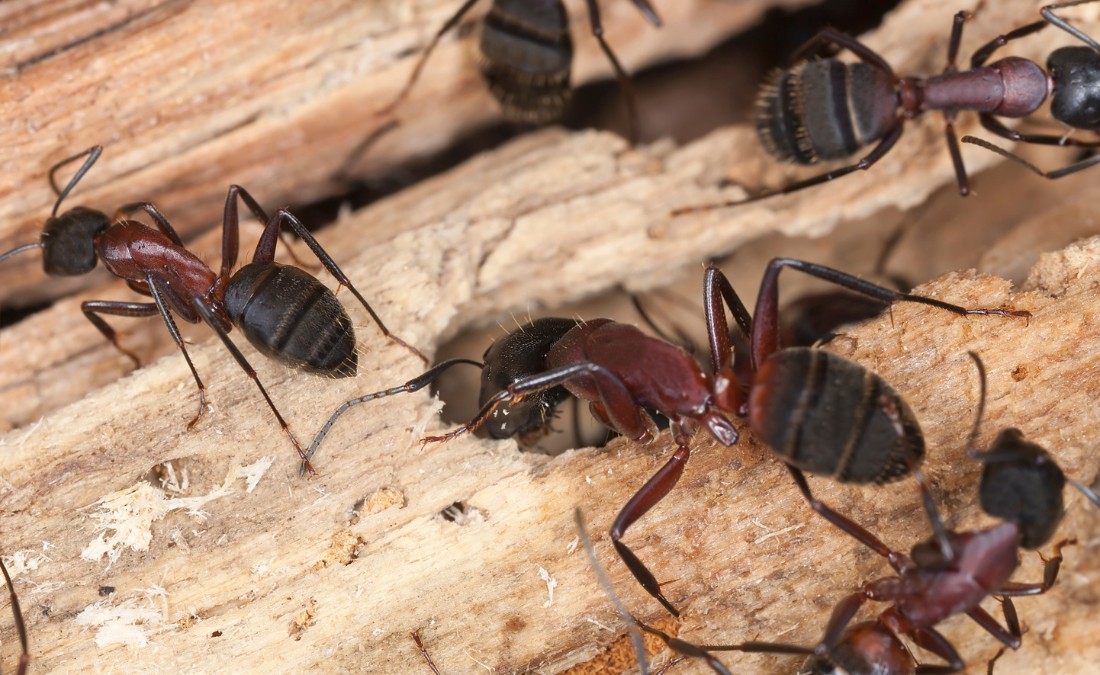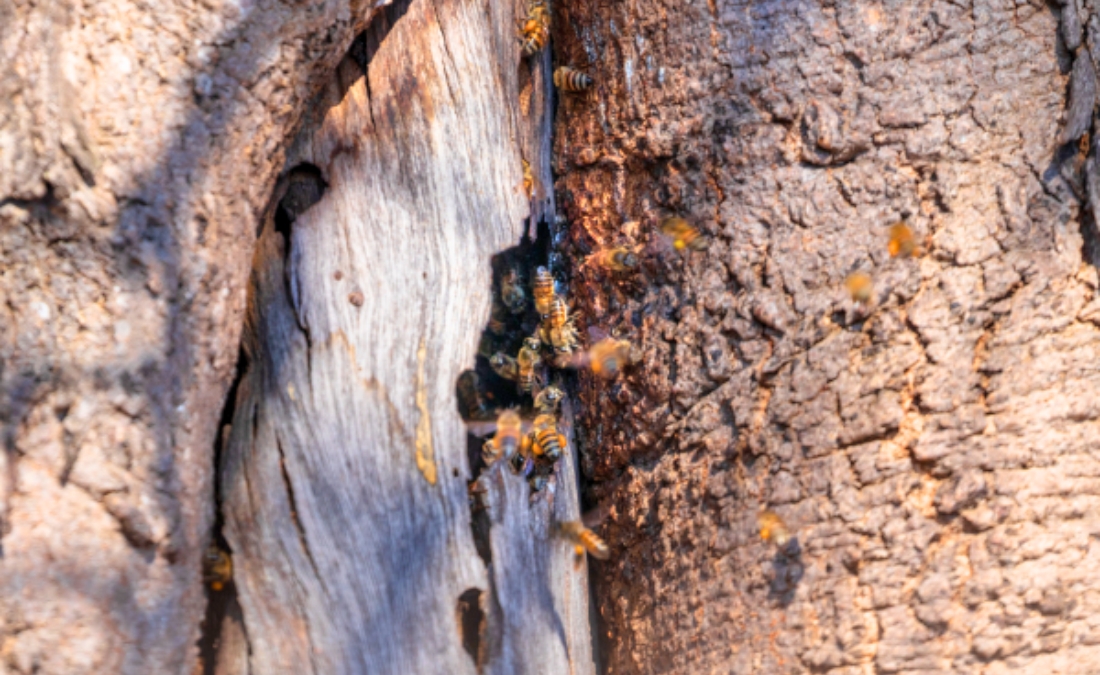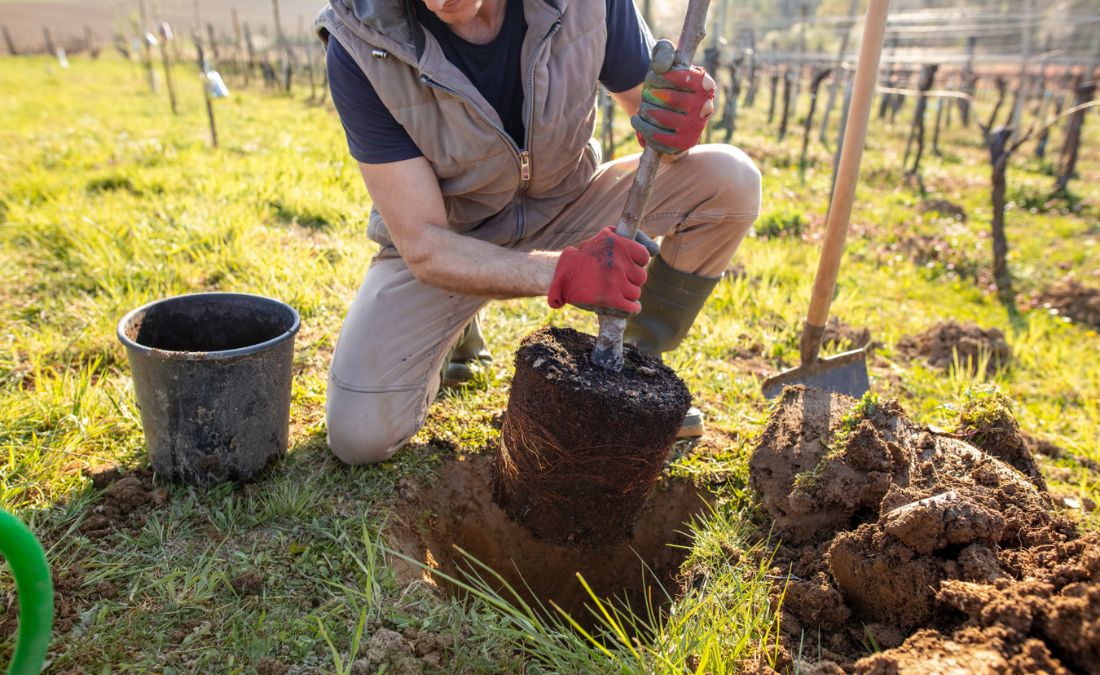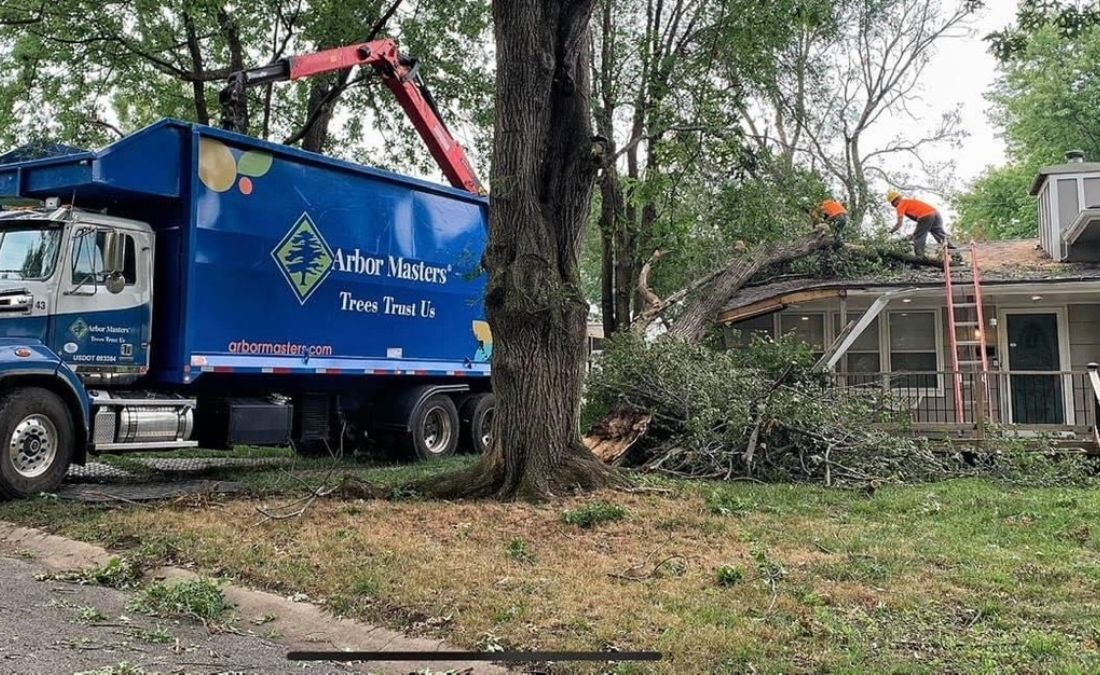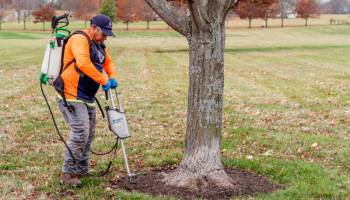How to Help Newly Planted Trees Thrive in Cedar Rapids
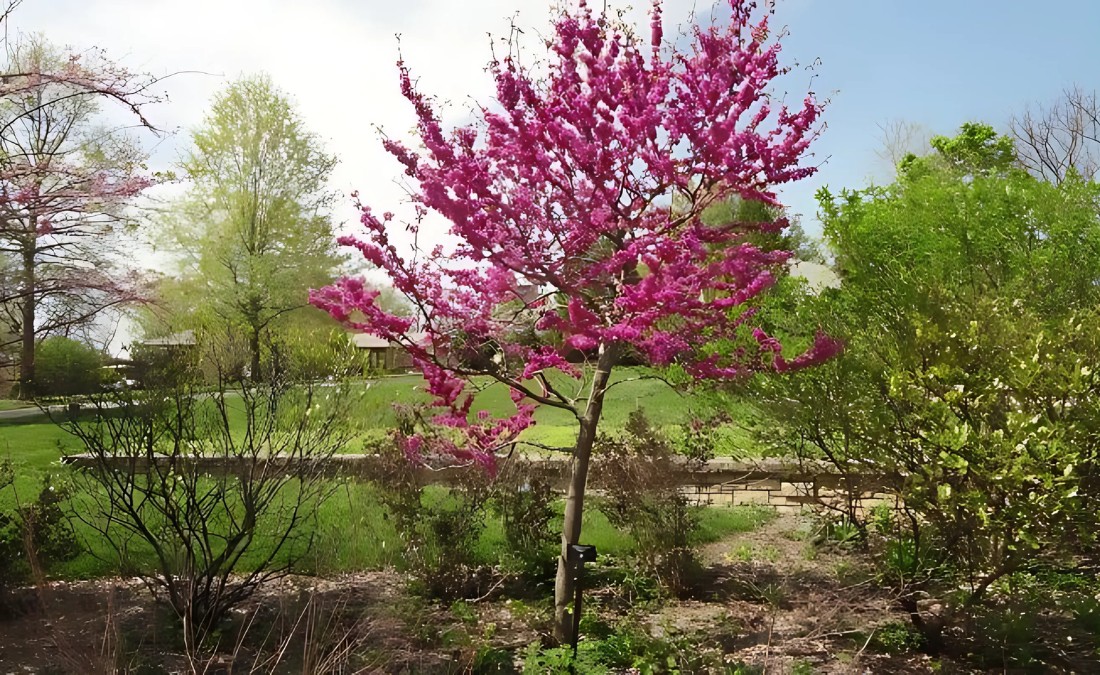
Just planted a tree in Cedar Rapids? Learn expert tips from Arbor Masters on how to care for it after planting so it grows strong and healthy for years to come.
So, you’ve finally replanted trees in your yard after losing them to the 2020 derecho. While planting is the first step to restoring Cedar Rapids’ tree canopy, the real work begins now.
You can’t just ignore all these new, young trees and hope for the best. They need love and support in their early years to ensure they don’t just survive, but thrive for decades to come. Here’s how you can support newly planted trees, from tiny saplings to large specimens, to ensure they provide your home with shade and beauty in the future.
Key Takeaways:
- Proper watering during the first two years is essential for developing strong, deep roots that help trees survive both droughts and storms.
- A 2-to-4–inch layer of organic mulch helps regulate soil moisture, prevent compaction, and protect roots from temperature extremes.
- Early structural pruning guides young trees into strong, stable forms that can better withstand Cedar Rapids’ intense weather.
- Regular monitoring for signs of pests and diseases allows you to catch and treat problems before they threaten your tree’s survival.
Water Properly to Help Trees Thrive
The most important thing you can do for newly planted trees is ensure they get enough water. When planting a new tree, it takes time for the roots to establish in their new environment. New trees require consistent watering in the first few years to make it through this establishment period and become self-sufficient.
However, too much or too little can spell disaster for delicate trees. Done right, proper watering helps develop deep, strong roots that anchor your tree and protect it from both summer droughts and winter storms. Most new trees need about 10 gallons of water per week during the growing season, applying it slowly so the moisture can soak deep into the soil where new roots can access it.
For best results:
- Water deeply but infrequently to encourage dense root growth. This means one or two thorough waterings per week rather than daily light sprinklings.
- Create a 4-foot-wide water ring around your tree with a 3-inch raised edge to help water soak in rather than run off.
- Always check soil moisture before watering. Wet soil can suffocate roots, while dry soil leads to stress and vulnerability.
- Water early in the morning or late in the evening to minimize evaporation and ensure most of the water reaches the roots.
- During extended dry spells, increase watering frequency but maintain the same amount per session.
While standard sprinklers work fine for turf grass, they aren’t best for watering young trees. Much of this water evaporates before it ever reaches tree roots. If you truly want your new trees to thrive, invest in a drip system or soaker hose. These will water trees slowly over the course of a few hours, ensuring deep, thorough watering with minimal effort on your part.
Help Water Newly Planted Street Trees in Cedar Rapids
Did you know that more than 11,000 trees have been planted around Cedar Rapids following the 2020 derecho? Serious progress has been made by the city and ReLeaf Cedar Rapids, to replant our urban canopy.
But planting trees along streets and in parks is only part of the battle. Now these trees need ongoing care, so they can become mature, beautiful shade trees one day.
Watering young trees is so important that the ReLeaf Cedar Rapids initiative needs volunteers to help water the thousands of new trees planted around the city. If a street has been planted by city officials or other volunteers, it likely needs a “Tree Bud,” or a volunteer who can water these trees each week to keep them alive.
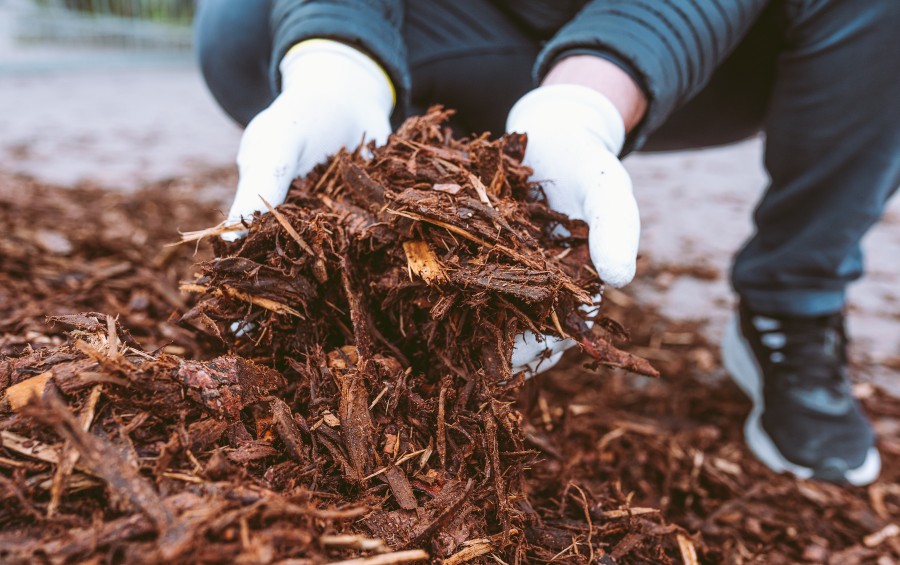
Mulch Correctly to Protect and Nourish Your Trees
A lot of homeowners think mulch is just about making their landscaping look clean and tidy. But for young trees, proper mulching can mean the difference between thriving and barely surviving. Mulch acts like a protective blanket, keeping moisture in the soil, regulating soil temperature, and preventing weeds from stealing valuable resources.
Cedar Rapids’ clay soils can be tough on young trees. They compact easily and don’t drain well, making it hard for roots to expand. But a good layer of organic mulch helps solve both problems. It limits soil compaction by preventing the direct impact of rain and discouraging foot traffic. It also decomposes slowly, adding nutrients to the soil and improving its structure. Plus, it protects delicate roots from summer heat and sun, as well as frigid winter temperatures.
For best results:
- Use organic mulch like wood chips or shredded bark, not gravel or rubber mulch.
- Create a ring 3 to 4 feet wide around your tree, keeping mulch 6 inches away from the trunk.
- Apply mulch 2 to 4 inches deep, no more and no less.
- Replace mulch annually as it breaks down.
- Never create mulch volcanoes by piling mulch against the tree trunk (even if you see neighbors or other landscapers doing it).
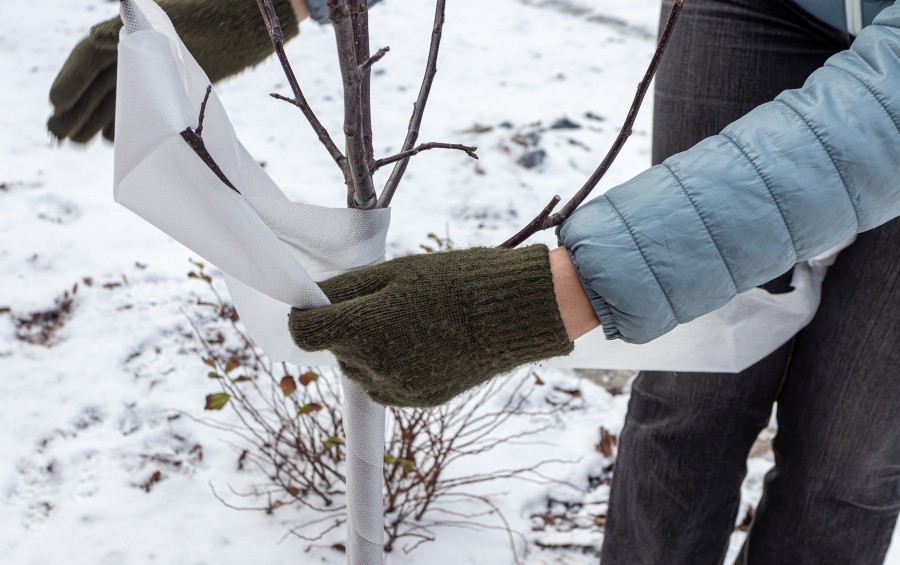
Protect Young Trees from Harsh Weather Conditions
Young trees are especially vulnerable during their first few winters in Cedar Rapids. Between freezing temperatures, drying winds, and salt spray from nearby roads, winter can be rough on establishing trees. But a little preparation in fall can prevent major headaches come spring.
The biggest threat to young trees in winter isn’t actually the cold – it’s winter burn. This happens when harsh winds and intense winter sun dry out the tree faster than frozen roots can replace the moisture. The result is brown, crispy leaves or needles that may not recover in spring. Broadleaf evergreens, like rhododendrons, are particularly susceptible, but all young trees benefit from winter protection.
Some simple steps to winterize your trees include:
- Water thoroughly until the ground freezes.
- Apply a fresh layer of mulch before winter to insulate roots.
- Wrap the trunk in light colored tree wrap to prevent sunscald.
- Install barriers if your tree is exposed to road salt spray.
- Consider using anti-desiccant spray on evergreens to prevent moisture loss.
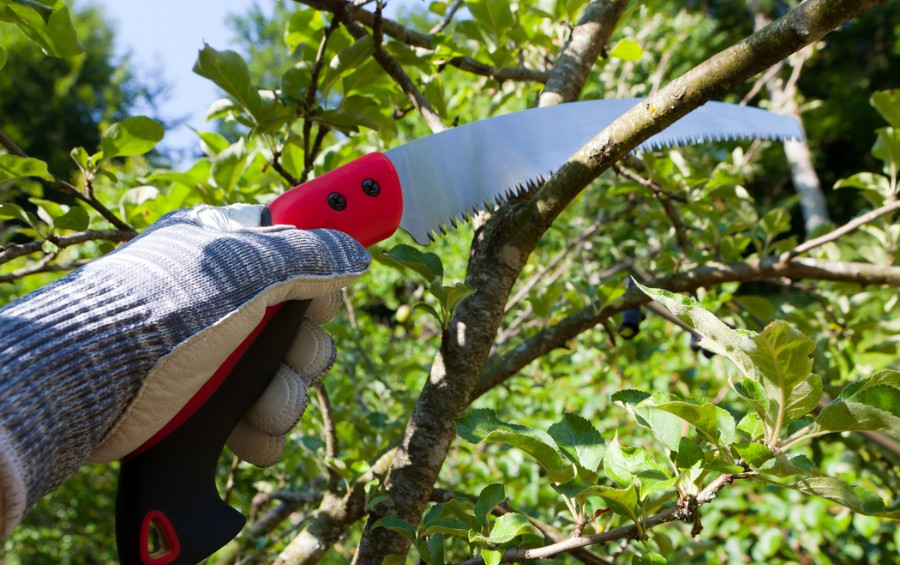
Prune Young Trees to Promote Strong, Stable Growth
Your young tree’s shape and stability depend heavily on how it’s pruned in its early years (or if it’s pruned at all). Much like training a young plant to grow up a trellis, early pruning guides your tree into a strong, stable form that can handle Cedar Rapids’ intense storms and wind. Proper pruning while young can help trees develop the structure they need to survive violent derechos in the future.
One of the most important things to watch for is co-dominant stems. Many species, like oaks, are prone to developing multiple trunks at one point. Although visually interesting,
trees allowed to grow and mature with co-dominant stems are inherently weaker and more likely to split and fail than single-trunk trees.
When pruning young trees:
- Remove crossing or rubbing branches to prevent bark damage.
- Thin out competing branches to establish one strong central leader.
- Cut back branches growing at very narrow angles that could split later.
- Remove low branches gradually as the tree grows taller.
- Make clean cuts just outside the branch collar to help wounds heal and minimize the chance of pest or disease problems.
Remember that each cut is a permanent decision that affects how your tree grows. While it’s fine to remove small branches and twigs, leave larger pruning jobs to Certified Arborists who understand proper pruning techniques.
Watch for Tree Pests or Fungal Diseases Before They Spread
A healthy young tree can usually fight off minor pest problems and diseases on its own. But during the stressful establishment period, trees are more vulnerable to attacks, since they lack a strong root system. Regular checks of your tree’s leaves, branches, and trunk can help you spot invaders before they cause serious harm.
Signs of trouble often show up in the leaves first. Spots, holes, or discoloration might seem minor, but they can signal bigger problems. Cedar Rapids’ humidity can encourage fungal diseases, while certain insects find stressed young trees particularly tasty.
Common signs of pest or disease include:
- Curling, spotting, or early yellowing of leaves
- Sticky residue on leaves or branches, often a sign of aphids
- White powdery coating on leaves, indicating powdery mildew
- Small holes in bark or sawdust-like material at the tree’s base
- Abnormal growths or swellings on branches
- Web like masses in branch unions
- Peeling or cracking bark that isn’t normal for the species
Don’t panic if you spot one of these symptoms. Some years are worse than others for pests and diseases, and many issues are treatable if caught early. Take photos of any problems you notice and reach out to a Certified Arborist for proper diagnosis. The solution might be
as simple as adjusting your watering schedule or improving air circulation around the tree, though insecticides or fungicides may be needed as well.
“After the derecho, it hasn’t just been the city that has invested countless dollars to planting new trees – many homeowners have as well. But all of that time and money is wasted unless property owners commit to caring for their new trees during these first few years as they get established. What you do now ensures your trees are around for many decades to come.” – Jerry Sheese, Branch Manager at Arbor Master Cedar Rapids
FAQs About Young Tree Care in Cedar Rapids
Should you fertilize young trees?
Generally, no. Most Cedar Rapids soils have adequate nutrients for young trees. In fact, fertilizing too early can do more harm than good by encouraging fast top growth before roots are established. Wait at least a year, and then only fertilize if a soil test shows specific deficiencies. Our experts at Arbor Masters can help with that.
Can you plant flowers or shrubs around your tree?
You can, but just don’t plant too closely to young trees. Trees need a lot of water and nutrients to build up a strong root system and support new growth. Planting shrubs, flowers, or clump grasses nearby, however, can help to create a microclimate around the tree that can prove to be beneficial – much like you’d find in nature. Just make sure not to disturb a tree’s roots if digging nearby.
How do you know if your tree is getting enough water?
The screwdriver test is the easiest way to check. Push a screwdriver into the soil near your tree. If it meets resistance, the soil is too dry. If it goes in easily, moisture levels are good. Another sign is leaf condition – wilting or curling leaves often mean your tree needs more water, while yellowing leaves might indicate overwatering.
Give Your Young Trees the Best Start – Call Arbor Masters
These young trees represent more than just landscaping – they’re an investment in your property’s future and our city’s recovery. Taking the right steps now during these early years will ensure your trees grow strong and healthy, providing decades of shade, beauty, and value to your home and our communities.
If you need specific guidance, or notice any of your young trees struggling, don’t hesitate to reach out to the expert team at Arbor Masters. We’re committed to the mission of relieving our city, and love helping homeowners care for their new trees. Call us at 319-359-6135 or fill out our online form to request a quote.

Get the latest local news, tree care tips, special offers, and company updates directly to your inbox! It's easy to subscribe and there's no spam - we promise.
"*" indicates required fields

